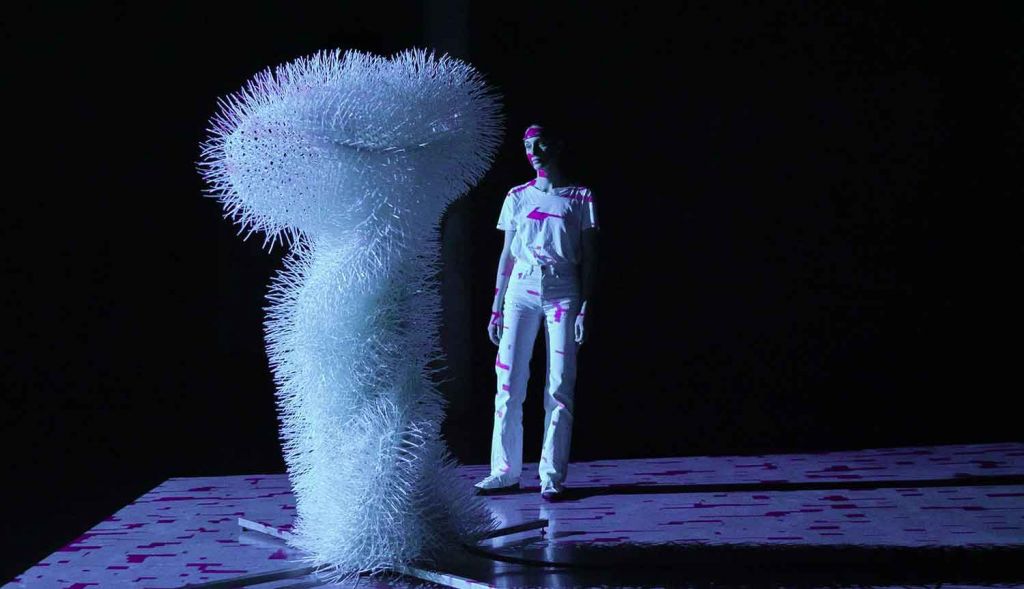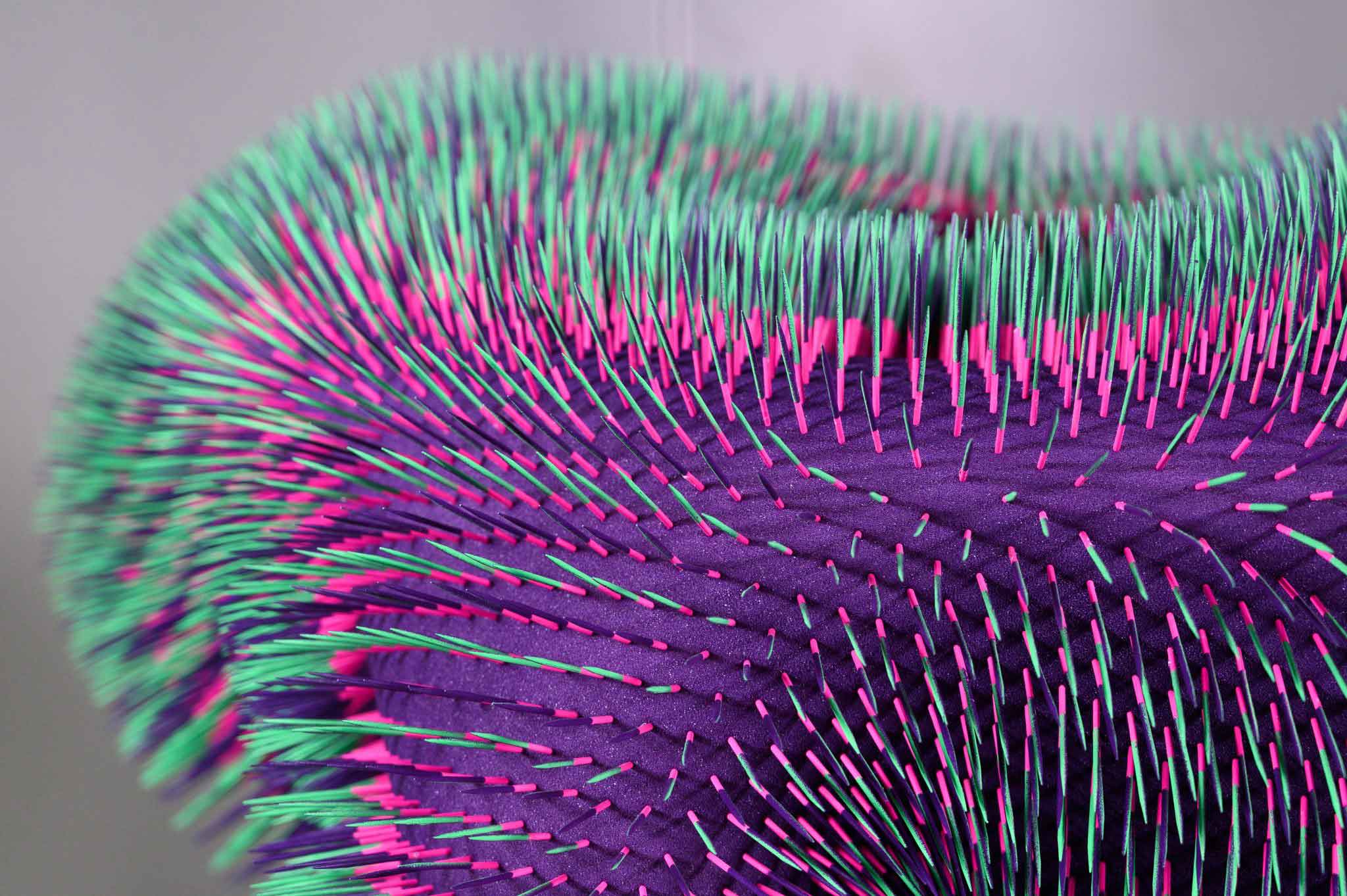Interview by Maren Häußermann

Emanuel Gollob is an Austrian artist who uses artificial intelligence to make his audience “do nothing”. The idea behind the project is the sensation that doing nothing nowadays is regarded as something negative and almost provocative. Doing nothing seems to express laziness while doing something is often associated with productivity and efficiency. In an environment of ever-growing pace and pressure and where a connection via technical devices is vital, Gollob confronts people with machines whose aim it is to make them become inactive.
Doing nothing with AI 2.0 is an installation that consists of an industrial robot covered in a skin of foam full of spines. This artificial creature moves and changes its colours. The second version changes its sound, too. But those effects do not happen randomly. They are a reaction of the artificial intelligence to the EEG waves the viewer creates, measured by a headband. The piece of art can therefore observe the brain activities.
From a neuroscientific point of view, there can be seen differences in brain processes when the person is working on an active task or not. With generative machine learning, Gollob’s machines convert these measurements’ results into feedback through which they choose their next moves. The functional aim is to generate a status with brain activity that shows no active task and the audience is doing nothing.
Gollob studied industrial design at the University of Applied Arts in Vienna with a master’s degree in design Investigations. His professors were Fiona Raby and Anab Jain from the Superflux studio. Gollob learned to approach projects by connecting things but always found his studies limited to the design’s function. He knew it was essential to leave the design bubble to realise his ideas. He became part of a research project where he learned the basics of robotics, so it started.
You work with various disciplines and often in coordination with other creators. How does this affect your projects?
It is essential to exchange expertise and experience with people who know other things and maybe see the work differently. I am a resident artist with the EU-funded project Mindspaces which focuses on finding solutions for the modern lifestyle. I work with Refik Anadol, Maurice Benayoun and Michael Sedborn. A new experience for me was also to build up my installation remotely. It is in Gijón in Spain right now, and since I could not travel there, I had to make a tutorial for the artwork, build up trust and pass on knowledge as quickly as possible. In the industry, this might be the standard procedure. It was a pleasant discovery to explain the details of my works to the technician for me.
Your art is based on a philosophical approach in combination with smart technology. How has the work developed since you started it?
The project develops visually as a reaction to the society that keeps changing. But my approach towards the project has been changing as well. The colours of the installations are based on Instagram stories and scrolling through websites. I was thinking of how we use our smartphones too much and how it changes our perception. Now, I don’t believe that this behaviour is necessarily a bad thing anymore. I think we should observe it and work with it.
Do you mean we could use this behaviour to develop our technical devices further? Do you have any examples of how this could look like?
For an exhibition in the US, I have been working on the connection between body language in the moment of doing nothing and how this can be used as unconscious feedback in the dialogue between AI and the audience. For a new Viennese Media Art Festival called CIVA, I am developing an interactive digital artwork focusing on social media platforms and their algorithms. While the smartphone artwork needs permanent screen swiping, the users’ facial expressions will become part of the artwork’s construction and thus make the audience become a co-author of it. The title is “do nothing & swipe”.
Online connectiveness and how we treat it is the main part of your work. Where did this idea come from?
It’s almost banal. I found myself standing at a station, scrolling the screen. And it was like a knot in the head. I couldn’t stop it, although I wasn’t looking at it. So, I asked myself how far I am still the boss of my “not doing anything”. It seems like doing nothing is not socially acceptable anymore. We have the acceleration of information, entertainment, productivity and the need always to be connected. This must affect our perceptions and our attention span. And on our visual norms.
How did you translate this idea technically?
I like to use elementary components. The spines in “Doing nothing with AI 2.0“ are just 23.000 toothpicks coloured in foam. And people see it and think it is super unique and complicated, but it is the most ordinary thing that many of us have at home. The colour scheme makes it seem like something strange. The second version is made with cable ties to create that translucent skin. I was mostly inspired by sea worlds and digital artists working on relatable projects two to three years ago, like Zeitguised, Vincent Schwenk and Madeline Gannon with the Artwork Manus.
What is your chief enemy of creativity?
Habit. The working through a to-do list. I find it vital to have a distraction and find new impressions to perceive something that is happening consciously.
You couldn’t live without…?
Social interaction. It is nice to interact with the machines and do nothing (laughs) but being alone also means having your perspective. I find reflection with other people important for new inputs.






